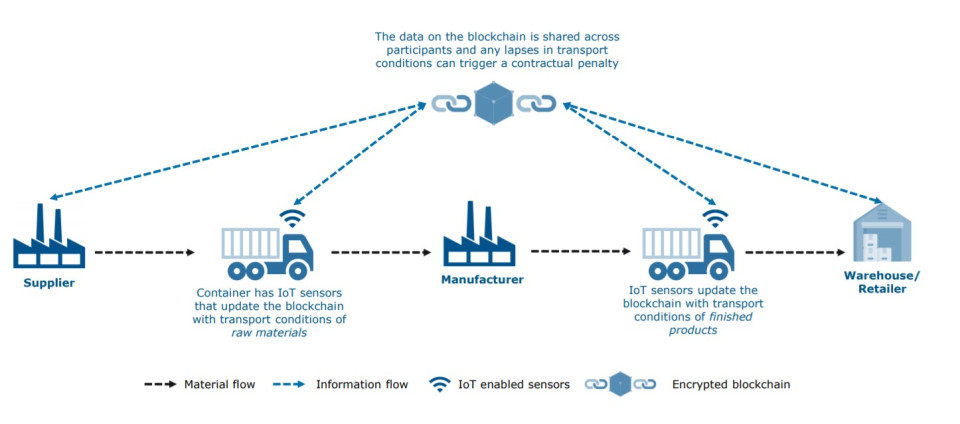Martina Buck
The digital revolution certainly gave rise to a surge in development, but not all changes were sustainable. This blog takes a closer look at blockchain and how this technology could be a help to reach the UN sustainable development goals.
What is blockchain?
The term blockchain became quite famous with the rise of the bitcoin bubble in 2017. This development led to a questionable need for computing power, which was not necessarily sustainable, not environmentally friendly and rather volatile. But with the rise of bitcoin came also the rise of the buzzword blockchain. While the idea existed since the 90ies, in the last few years suddenly everyone wanted to integrate this novel technology. A Blockchain consists of a list of blocks each containing a cryptographic hash of the previous blocks, a timestamp and transaction data. Since the information of transactions lives on in the following blocks, the chain can not be easily changed. With blockchains, decentralized consensus the Byzantine Generals Problem (to ensure that all loyal generals can reach an agreement, communicating via messenger only, even with unknown traitors among them) could be solved (Raval, 2016).
How could blockchain be sustainable?
This technology could help to lead to an oversight in complicated supply chains, financial transactions and on more general terms to provide oversight of transactions not easily to be manipulated. Reliable information leads to more trust and therefore more efficient transactions. (Nguyen, 2016) Reliable information about transactions is not only needed for financial transactions but could be useful for transactions of all kind, for example, the production chain in the fashion industry. By having the oversight of ownership and transactions it becomes clear where a product was produced, where the materials from the product came from and so on. In the example of the fashion industry, big companies with complicated supply chains would have it easier to ensure their quality promises by more control over the actions of their suppliers. (Adams et. al., 2018) Similarly as seen in figure 1, for an organic cotton T-shirt, it would become clear through the exchange of data, in which company the T-shirt was sewn together, who delivered them with fabric, who produced how much yarn for the fabric company during which time, and which farmers supplied the yarn company with how much organic cotton.

Figure 1: Blockchain included in the supply chain
The UN Sustainable Development Goals could be supported by this technology by ensuring a more reliable supply chain. The knowledge of the supply chain is very valuable for the UN Sustainable Development Goals in nearly all 17 sustainable development goals. It could be leading to more trust in labels such as for fair labour environments, organic and sustainable food production and also other environmental sustainability aspects such as water usage or the CO2 footprint. It could therefore not only cause better conduct of suppliers but also lead to more willingness from the side of the consumer to invest in such products and therefore lead to an even greater need for such goals to be met.
Increased trust in the information about the supply chain could also help to produce more reliable life cycle assessments. A great difficulty for them is the collection of reliable data. Should the implementation of blockchain in the supply chain become the norm and should this data become accessible the sustainability of products could be more efficiently assessed and help to further the precision of such assessments and therefore improve action plans for higher sustainability.
References:
Adams R., Kewell B., Parry G. (2018) Blockchain for Good? Digital Ledger Technology and Sustainable Development Goals. In: Leal Filho W., Marans R., Callewaert J. (eds) Handbook of Sustainability and Social Science Research. World Sustainability Series. Springer, Cham
Q. K. Nguyen, “Blockchain – A Financial Technology for Future Sustainable Development,” (2016) 3rd International Conference on Green Technology and Sustainable Development (GTSD), Kaohsiung, 2016, pp. 51-54.
DOI: 10.1109/GTSD.2016.22
Raval, Siraj (2016). “What Is a Decentralized Application?”. Decentralized Applications: Harnessing Bitcoin’s Blockchain Technology. O’Reilly Media, Inc. pp. 1–2. ISBN . OCLC 968277125. Retrieved 17 March 2020
Media Attributions
- Blockchain-Konzept © Capgemini